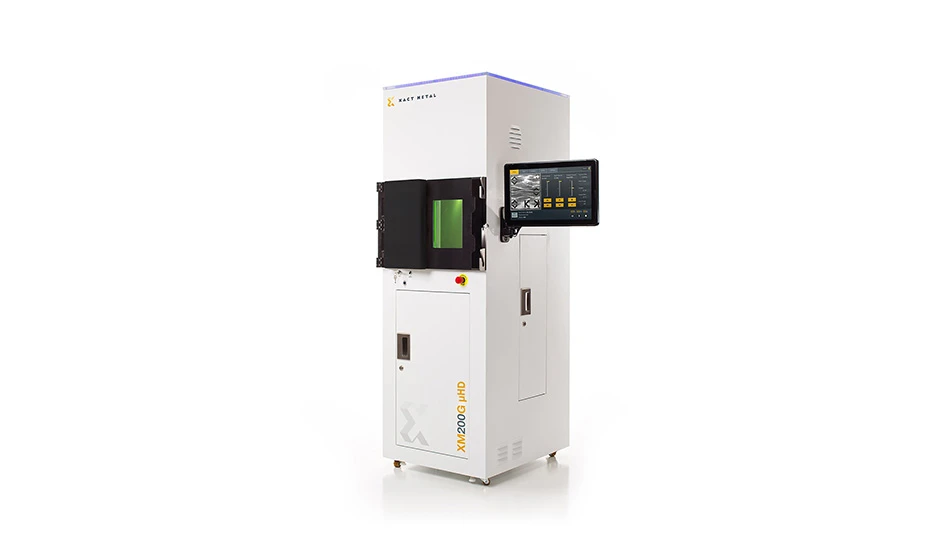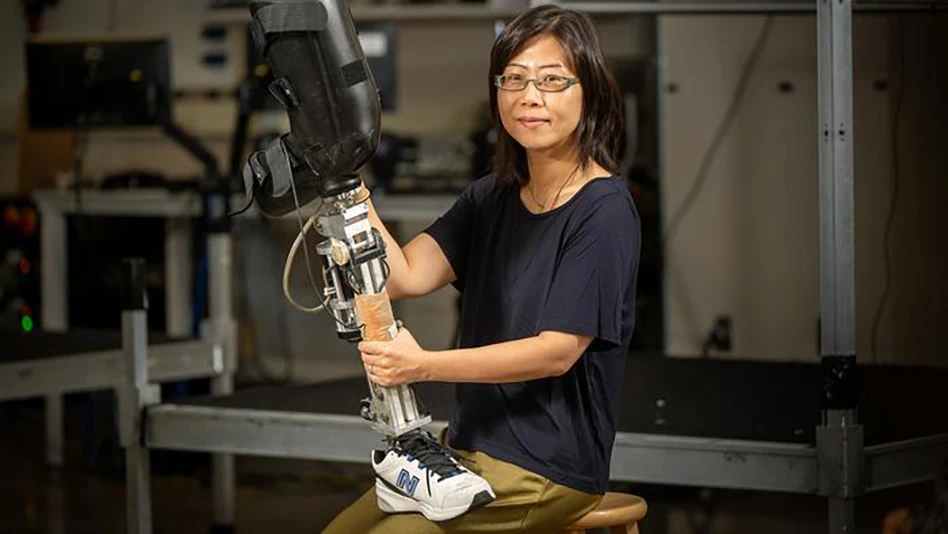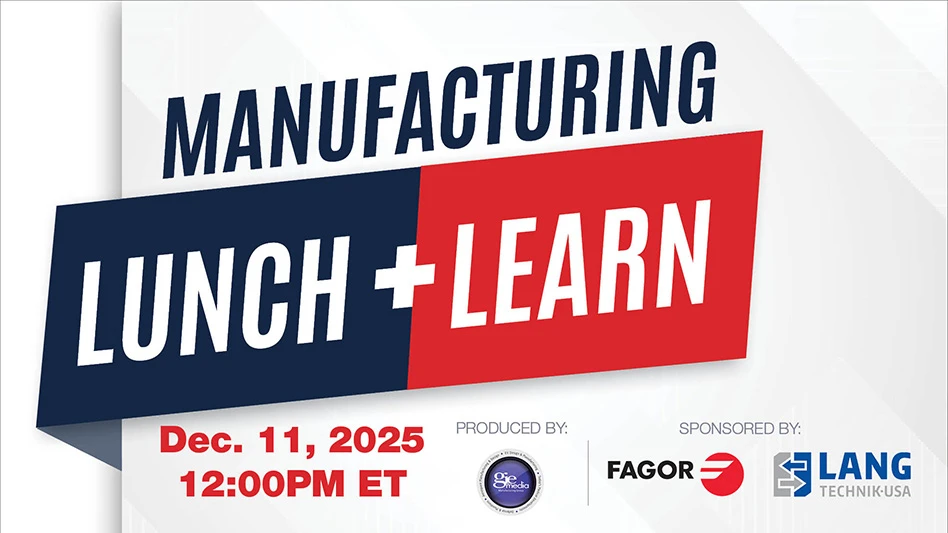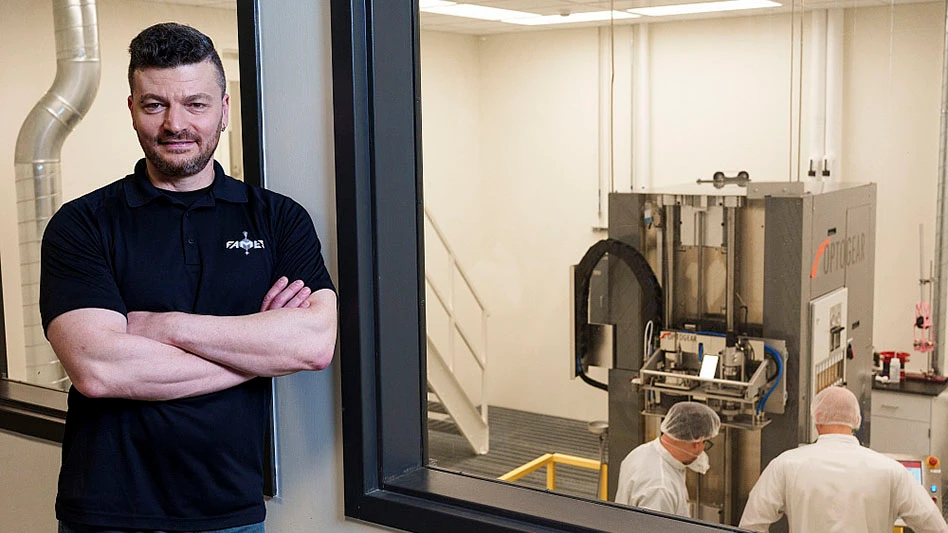As a process, thread whirling is not exactly new. Since the early 1960s, manufacturers have implemented the technique to produce screws and machine out the flutes of drill bits. Much more recently, though, medical manufacturers have begun to see the application’s value in the production of bone screws.
Traditionally, bone screws were machined using a single-point threading tool, an approach that brings many challenges. Produced from materials such as stainless steel, titanium, or cobalt chrome, bone screws feature a depth of thread that places considerable stress on the cutting edge. Rapid tool life degradation requires taking many shallow cuts, followed by a finishing operation. The use of special support devices is necessary for any but the shortest screws. In addition, a single-point threading tool can only achieve helix angles up to 7°, a substantial barrier considering that many of today’s bone screws call for angles of 15° or larger.
 |
| Thread whirling consists of feeding a slowly rotating workpiece through a bolted-on whirling adaptor that contains a circular milling tool running at a high rpm. |
Typically performed on a Swiss-style turning center, thread whirling consists of feeding a slowly rotating workpiece through a bolted-on whirling adaptor that contains a circular milling tool running at a high rpm. The process neutralizes many of the issues encountered with single-point threading. By positioning the cutting tool near the guide bushing, the need for a support device is eliminated and aggressive metal removal rates can be used to complete a thread with a single pass. Additionally, achievement of helix angles by tilting the entire tool allows angles of up to 25°.
While thread whirling offers significant benefit over single-point threading, the process has still been less than ideal for bone screw manufacturers. Tool life had been improved, but was still below what many believed could be obtained. Additionally, the process could cause chatter that would occasionally result in unsatisfactory surface finishes within the thread. Multiple tooling companies have been developing products to counteract these issues, and Sandvik Coromant’s research into the area has resulted in the CoroMill 325 equipped with GC1105 inserts.
One of the key aspects of the CoroMill 325’s design is its use of a differential pitch insert layout. Rather than being spaced evenly apart, inserts in the pocket are positioned at varied locations. With the varied spacing, the harmonics are changed with each insert, interrupting chatter before it can grow, which, in turn, improves part quality and boosts tool life. The GC1105 grade was originally developed for turning in heat resistant super alloys. Its sharp edges and combination of hardness and toughness have proved an ideal solution for thread whirling in stainless steels and titanium. It increases reliability in longer part runs and results in higher cutting productivity.
The CoroMill 325 was recently integrated at a medical manufacturer that had been using an older thread whirling tool. Bone screws made of high chromium and nickel stainless steel are produced on a Tsugami BS20 Swiss turning machine. Running at the same cutting speed and feedrate as the previous tooling, the CoroMill 325 dramatically improved tool life, resulting in a 144% increase in the number of components produced per tool. The medical manufacturer estimated that the new tooling would provide total annual savings of $82,050.
At this point, most medical manufacturers are at least aware of the potential benefits of thread whirling. As an increasing number of technologies are being developed and applied to the process, the advantages are rapidly increasing.
Sandvik Coromant
Fair Lawn, NJ
coromant.sandvik.com/us

Explore the October 2010 Issue
Check out more from this issue and find your next story to read.
Latest from Today's Medical Developments
- GrindingHub Americas launches in 2027 in Cincinnati, Ohio
- Methods Machine Tools now offers the Nakamura-Tome NT-Flex
- Battelle awards $900,000 in STEM education grants to Ohio schools
- #55 Lunch + Learn Podcast with KINEXON
- Starrett and Gerstner offer limited edition, American made 1950s replica wooden machinist tool chests
- EMCO’s UNIVERSALTURN 50: The new benchmark in universal turning
- Archetype's Expertise for Equity accelerates early-stage innovation
- Stratasys expands its AM solutions with Tritone's cutting-edge technology





